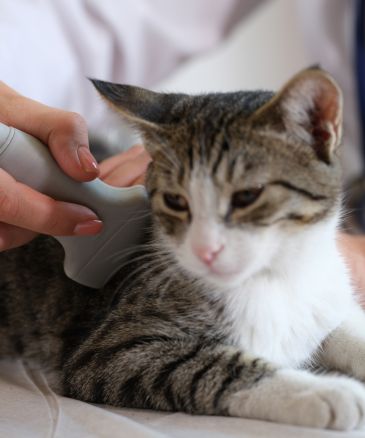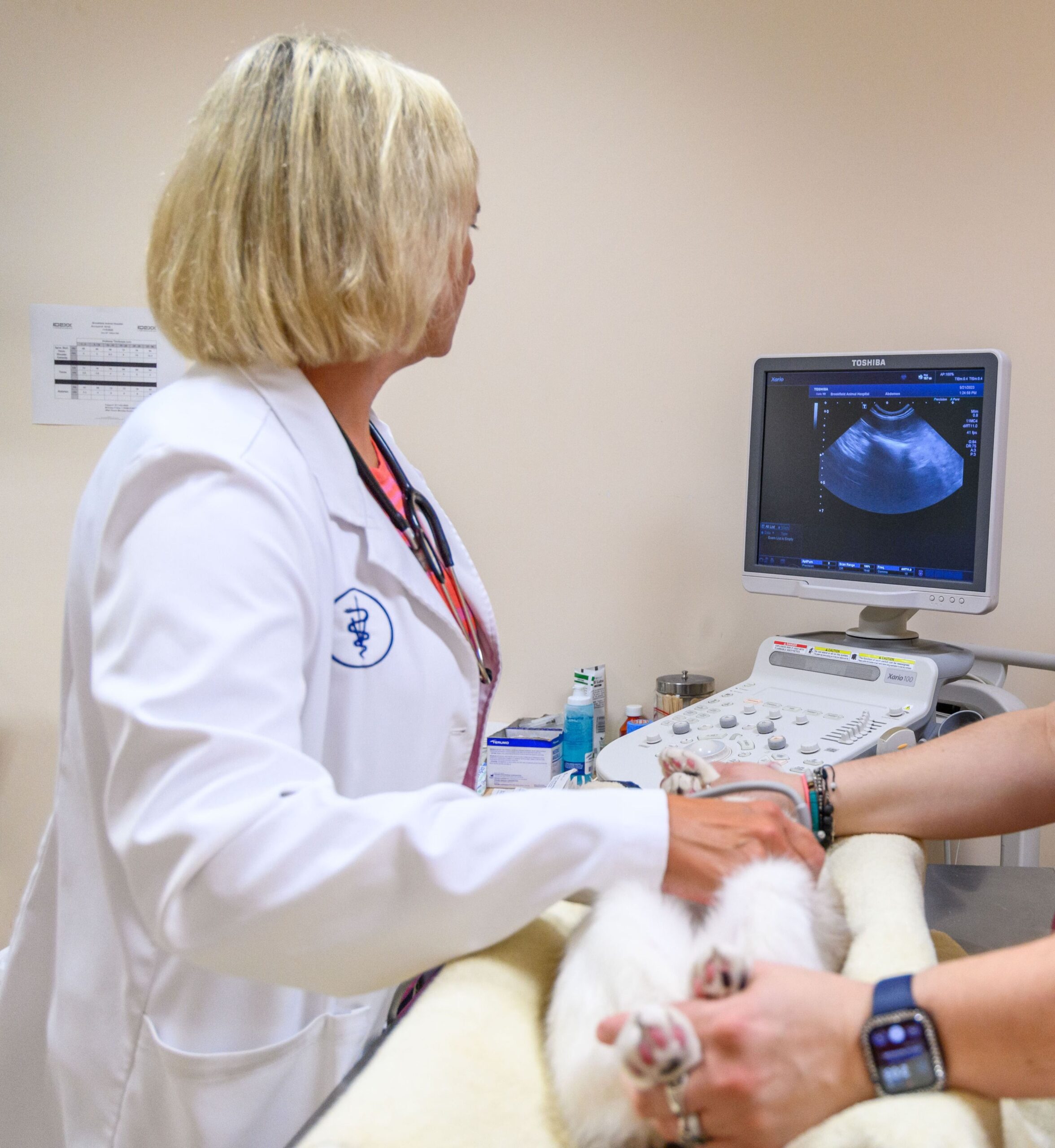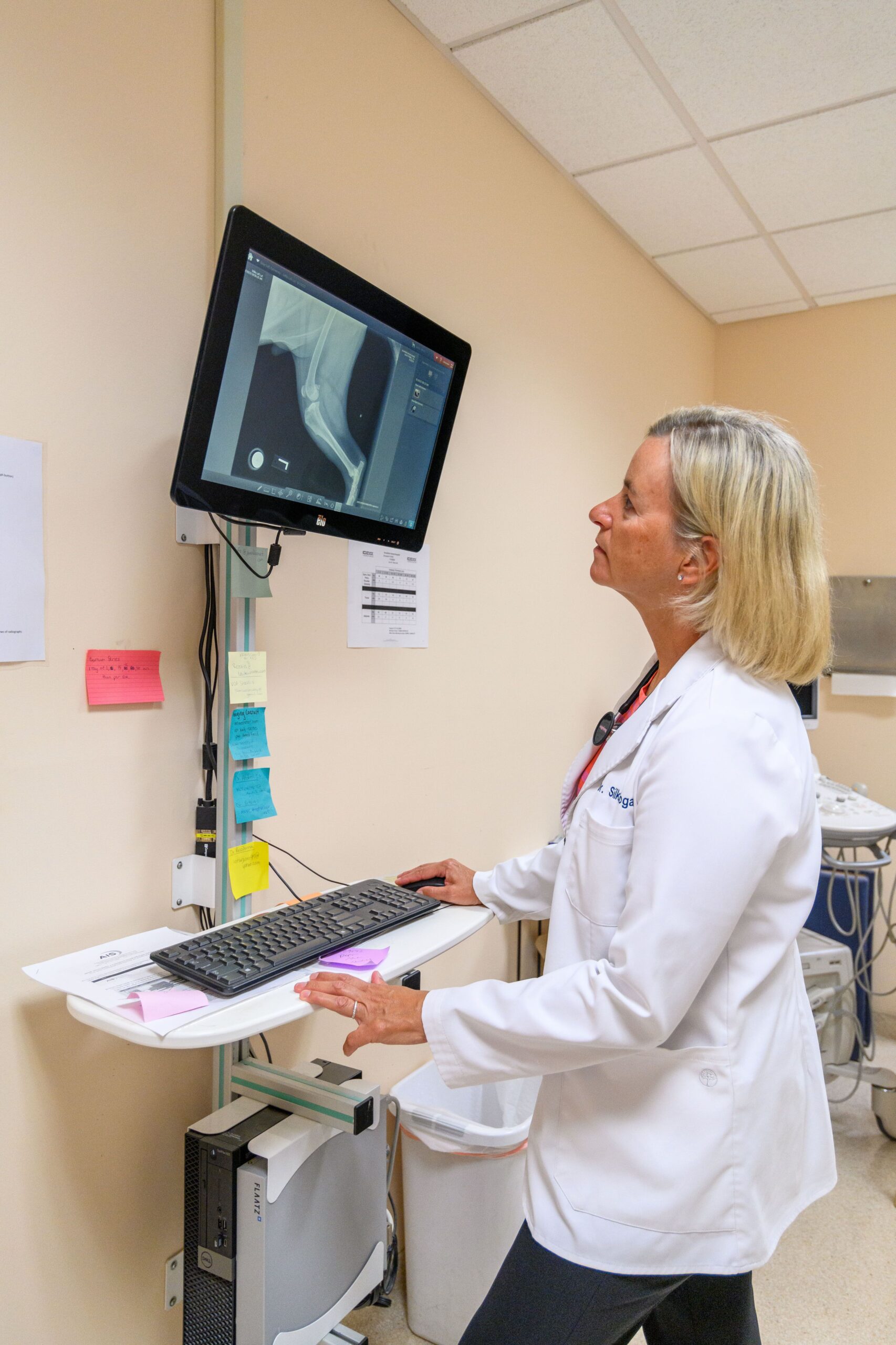Pet Imaging
Learn more about our pet imaging services below.
Elevating Pet Care with Imaging in Brookfield, CT
We at Brookfield Animal Hospital are aware of the strong connection you have with your animal family members. Beyond the norm, we’re dedicated to providing exceptional care. We are pleased to provide imaging services since it gives us the chance to examine your pet’s internal organs in great detail.
Echocardiography
We believe that when it comes to your pet’s health, nothing should be overlooked because the heart is at the center of their well-being. An “echo,” or echocardiography, is a non-invasive ultrasound procedure that takes real-time pictures of the structures and operations of the heart. Using this cutting-edge technology, we can:
Early Detection: Echocardiography can identify heart conditions at their earliest stages, even before symptoms manifest. Early detection is key to initiating timely interventions.
Precision Diagnosis: Our expert veterinarians use Echocardiography to assess cardiac structures, blood flow, and function with remarkable precision. This helps in diagnosing conditions like heart murmurs, cardiomyopathy, and congenital heart defects.
Personalized Treatment: Each pet is unique, and their heart health should be treated as such. Echocardiography allows us to tailor treatment plans to your pet’s specific needs, ensuring the best possible outcome.
Minimized Stress: Echocardiography is a non-invasive procedure that doesn’t require sedation. This minimizes stress for your pet, making the experience more comfortable.
Ultrasound
Ultrasound is a valuable diagnostic tool in veterinary medicine that offers numerous benefits for the health and well-being of our furry companions. This non-invasive imaging technique utilizes high-frequency sound waves to create real-time images of the internal structures of a pet’s body. Here are some key reasons why pet ultrasound is important and its associated benefits:
Non-Invasive: One of the primary advantages of ultrasound is that it does not require invasive procedures or radiation exposure, making it a safer and less stressful option for both pets and their owners.
Visualization of Soft Tissues: Ultrasound is particularly effective at visualizing soft tissues like the heart, liver, kidneys, and reproductive organs, which may be challenging to assess through other means.
Diagnosis and Monitoring: Ultrasound is essential for diagnosing a wide range of medical conditions, from pregnancy and organ abnormalities to heart disease, cysts, tumors, and more. It also helps monitor the progression of diseases and the effectiveness of treatment.
Pregnancy Confirmation: Ultrasound is a vital tool for confirming pregnancy and assessing the health of developing fetuses in expectant pets.
Real-Time Imaging: Unlike static X-rays, ultrasound provides real-time imaging, allowing veterinarians to observe organ function and blood flow, making it a valuable tool for cardiac and vascular evaluations.
Early Detection: Early diagnosis of conditions is often critical for successful treatment. Ultrasound can detect abnormalities in their early stages, leading to more effective interventions.
Personalized Treatment Plans: The detailed information provided by ultrasound images allows veterinarians to tailor treatment plans to the specific needs of each pet, ensuring the best possible care.
Radiography
Radiography or X-rays are a fundamental and invaluable tool in veterinary medicine for diagnosing and assessing a wide range of medical conditions in pets. These images provide critical information about a pet’s internal structures, helping our veterinarians make accurate diagnoses and formulate effective treatment plans. Here are some key reasons why pet X-rays are important:
Diagnosis and Assessment: X-rays are crucial for diagnosing various health issues, including fractures, tumors, organ abnormalities, and lung conditions. They provide vital insights into a pet’s overall health and allow veterinarians to make informed decisions about treatment.
Monitoring Changes: Over time, X-rays can help monitor the progression of diseases, such as arthritis or heart conditions. They provide a baseline for comparison, enabling veterinarians to assess treatment efficacy.
Guidance for Surgery: X-rays serve as a guide for surgical procedures. Surgeons can use them to ensure accurate incisions and proper alignment of bones during orthopedic surgery.
Fracture Assessment: In the case of injuries, X-rays are invaluable for assessing the type and location of fractures, which aids in determining the appropriate treatment, whether that’s surgery or a cast.
Early Disease Detection: X-rays can reveal subtle changes in the body that may indicate the early stages of disease. Detecting issues early often leads to more successful treatments.



